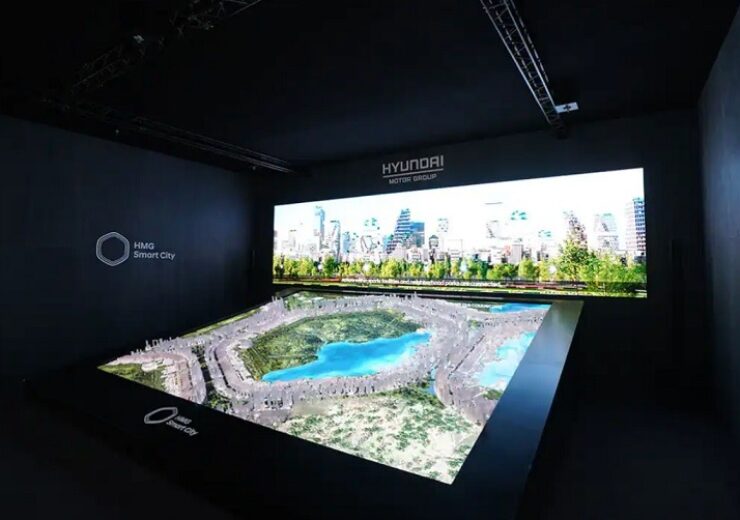The smart city concept from the South Korean group is a hexagonal-shaped city with its surface layer being human-centred and the underground layer being function-centred

The HMG Smart City master model was presented at the 2022 World Cities Summit in Singapore. (Credit: Hyundai Motor Company)
Hyundai Motor Group (Hyundai Motors) has showcased the HMG Smart City master model, a human-centred future city vision, that is claimed to be well linked by mobility solutions and at the same time provide a harmonious coexistence with nature.
The future city vision was unveiled by the South Korean automotive manufacturer at the 2022 World Cities Summit in Singapore.
Inspired by a honeycomb pattern, the HMG Smart City concept is a hexagonal-shaped city. Its surface layer is human-centred while having a function-centred underground layer.
Buildings encircle nature on the surface layer. This means parks and forest will be located at the centre of the city to minimise the gross area developed by humankind in an effective manner, said Hyundai Motors.
According to Hyundai Motors, the model is a representation of its vision for smart cities. It illustrates how the group will empower smart cities with sustainable and smart mobility solutions.
The group expects the HMG Smart City model to be used as a guideline for building smart mobility solutions that underpin smart cities around the world while strengthening their urban communities.
Hyundai Motors president and chief innovation officer Youngcho Chi said: “The HMG Smart City master model is our vision for a human-centred city that will revitalise urban communities. In the future smart cities, our ambition is for humankind to live with nature while embracing technology.
“Our air and ground mobility solutions will redefine urban boundaries, connect people in meaningful ways, and revitalise cities.
“We will continue to work with governments around the globe to bring our smart city vision to reality, while rapidly advancing capabilities in future mobility solutions.”
In the HMG Smart City model, buildings are split into three sections which are high, medium and low based on population density.
The density comes down nearer the parks and forests in the city centre to provide an unobstructed view of nature for people from any part of the city.
City landmarks will be located in the high-density area, while security infrastructure will be built in the medium density area.
The city will be linked via road infrastructure in the underground layer. Transportation of all goods and services will be underground by using autonomous mobility, with autonomous robots to make the final delivery.
The HMG Smart City model has citizens travelling between cities by advanced air mobility (AAM).


